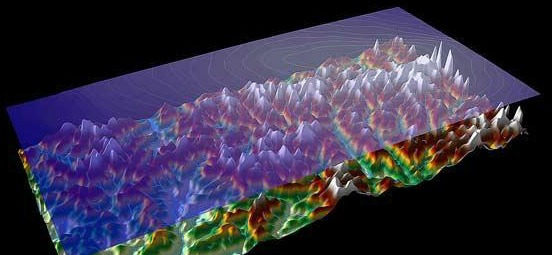MI weekly selection #102

Massive mountain range in Antarctica covered by protective ice
The Gamburtsev Mountains in Antarctica are 100 million years old but look much younger due to lack of erosion because its massive expanse is entirely encased in ice. Scientists used airborne imaging technology to survey the range’s massive peaks and also found a network of subglacial lakes and streams that flow through its valleys, resulting in the frozen mantle that protects the Gamburtsevs.
Glowing worm discovered in rainforest in Peru
A strange glowing worm that may be the larval stage of an unidentified species of beetle has been found in the Peruvian rainforest, lighting up the soil there. Researchers think the green glow lures insects into the waiting jaws of the worms, which burst out of the ground to gobble their prey.
Ancient fossils found in India linked to modern-day horses, rhinos
Fossils of a Cambaytherium thewissi found in India may lead researchers to a common ancestor of horses, rhinoceroses and other perissodactyls, also known as odd-toed ungulates. Cambaytherium thewissi lived about 54.5 million years ago when India was an island that laid between Madagascar and Asia.
An exoplanet’s magnetic field
By analyzing the extremely fast winds hitting exoplanet HD 209458b from its sunlike star, researchers think they’ve gauged the strength of the gas giant’s magnetic field, a first for an alien world. Researchers used a 3D model that suggested the exoplanet’s magnetic field is about 10% as strong as Jupiter’s.
Reprogramming structural cells into neurons could repair brain damage
Coaxing NG2 glia, or structural cells, to transform into neurons in the cerebral cortex, could help repair damage. Researchers modified retroviruses to carry genes for Sox2, a transcription factor that plays a vital role in stem cell development, to transform into NG2 glia cells into neurons. The neurons only grew in injured regions and not in the brains of uninjured mice.